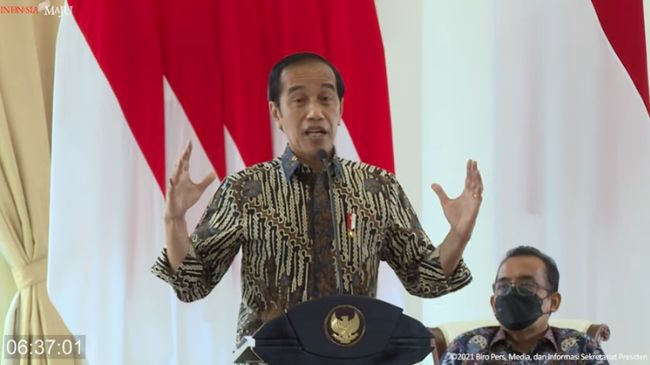Four important composers from here are to be introduced, who deserve to be better known. After all, her works were known and loved from Silesia, Holland and Austria, and some associated with Mozart. At the beginning there are two monastery composers, which shows the importance of the monasteries as the home of the arts. Both found their field of activity there and both tragically their artistic downfall.
Benedikt Geisler was born in Dettelbach in 1696 and baptized Caspar. From 1717 he was enrolled at the Würzburg University. In the same year Wolfgang Händler became court organist, a native of Nuremberg and a student of Pachelbel, and later also Kapellmeister. He comes into question as Geisler’s teacher, because his solid compositions and his organ playing speak for this excellent organ and composition teacher.
In 1720 Geisler entered the Augustinian canons of Triefenstein, was given the monastery name Benedikt and was ordained a priest four years later. The quality and scope of Geisler’s compositions, which he created from 1738 to 1753, speak for an enthusiastic monastery and musician life: nine bulky volumes of church musical works, printed in Bamberg and Augsburg, show his ability and his imagination. A consecration service in the converted Burkardus crypt in Homburg in 1741, musically embellished by the Triefenstein conventuals, may have been a pleasant change.
However, this is contradicted by the fact that Geisler fled three times from the monastery life that he had promised himself. His first escape took him to France as early as 1727. He fled a second time in 1745 to the Nuremberg and Fürth area, where he even renounced his denomination. A prison sentence on return was the result. He then escaped a third time in 1748, breaking open doors and locks, taking three silver spoons with him and forging a travel document. He was quickly caught and brought back, and he declared that he had wanted to ask the Pope in Rome for a remission of his sentence or for a transfer to another monastery.
The Triefenstein provost determined the life-long imprisonment, which was extremely severe even for the circumstances at the time, and informed the Würzburg “clergy government” that the “uncorrectable” had been successfully dealt with. to convince to endure his purgatory in this world in order to save his soul. Geisler’s compositional work also died out. After more than 24 years in prison, Geisler died without pardon in 1772 in the Triefenstein monastery.
A remarkably intimate work are his “Stella Maris”, both plaintive and beguiling invocations of Our Lady in times of distress. ?? Contra pestem ??, that means ?? against the plague ?? he wrote in the foreword of 1746. In fact, years after the Battle of Dettingen near Aschaffenburg in 1743, epidemics raged, known as “war plague”. called.
Peregrin Pögl: Resignation by the Archbishop
Peregrin Pögl (also Pögel) came from the Bohemian town of Sandau, where he was born in 1711 and baptized in the name of Joseph. Since his brother Johann Jacob can be proven to be the secretary of the music-loving Count Rudolf Franz Erwein von Schönborn in Wiesentheid, it is conceivable that the family moved to seek their fortune in Franconia. So Jacob got to the von Schönborns, Joseph got to the von Huttens, who also had a great family history, who loved and promoted the arts.
In 1734 Pögl joined the Benedictine order, entered the Neustadt am Main monastery in 1735, took vows and was given the name of the order Peregrinus. He was ordained a priest in 1738 and elected prior in 1764. Peregrin found a flourishing musical life, so Father Ämilian Hönninger had works of church music printed as early as 1734.
Between 1746 and 1763 Pögl also composed piano music, but above all all genres of church music. The entry of a son of the Bamberg court musician and music publisher Johann Jacob Schnell into the monastery enabled the establishment and operation of the monastery’s own sheet music printing facility. Its purpose was, in addition to the decoration of the church services, the economic success of the monastery. With a printed sheet music of six masses, Father Peregrin was able to thank a supposed patron, because the title page bears a dedication to Christoph Franz von Hutten, who was born in Lohr / Steinbach, Archbishop of Speyer and has just been promoted to cardinal.
Unfortunately, in 1769 a centuries-old legal dispute over the imperial immediacy of the abbey with the prince-bishopric of Würzburg escalated, which was supposed to give the monastery more independence. The diocese wanted to prevent the loss. The resourceful brothers expertly published a pamphlet on the matter in the monastery printing house. The result was the confiscation of the printing works and the impeachment of Pögl by Prince-Bishop Adam Friedrich von Seinsheim. The monastery printing shop was closed and Pögl no longer published any compositions. In the last years of his life before his death in 1788, Pögl was blind.
The Kreusser family of musicians: letters from Mozart
The Kreusser family of musicians has its origins in Lengfurt am Main in the 17th century. There is a ‘minstrel’ there early on. in the family. Open-mindedness and family cohesion made the success of these musicians and composers. As if it were the most normal thing in the world for a Lengfurt native to meet the Mozarts, we find a number of testimonies to this in letters and notes from the Mozarts, which give an insight into the Kreusser’s musical life.
Wolfgang Amadé was just nine years old when the family, on their legendary 3-year trip to the European music metropolises in Amsterdam in 1766, saw the ?? 2 Kreuser. ?? got to know how father Leopold noted in his travel notes. Johann Adam Kreusser (1732 ?? 1791) was concertmaster of the Amsterdam theater orchestra there, the younger brother Georg Anton Kreusser (1743 ?? 1810) was with him for music training.
Four years later in November 1770, Leopold from Milan reported to his wife in Salzburg: ?? I don’t know if I wrote to you that H: Kreuser the Younger visited us in Bologna. the young Kreuser from Amsterdam, whose brother directs the first violin alda, who always came to us and wanted to travel with us. He asked us in Rome and Neapl, but we were already gone. he recommends you both.
?? Kreüser the younger ?? was to establish his career as Kapellmeister at the Mainz court in 1773, a position that father Leopold could only dream of for his son throughout his life. For Leopold, as can be read in letters from 1777 and 1778, he was a key figure at the electoral court in Mainz, and an example of how to make a career: a predecessor who no longer does anything, comes at the right time, an easy one, Write a symphony that goes in the ear, and then concert master and then capell master. Wolfgang Amadé did not follow it to our benefit. When he had traveled to the coronation of Leopold II in October 1790, he was to meet Kreusser for the last time in Mainz a few months before his death.
Another family member, a cousin, was Peter Anton Kreusser, born in 1765. He was a violinist at the French and English courts and published more than two dozen collections, mostly with piano works. Among them are waltzes about an old German song, perhaps of Mainz or Lengfurt origin, which now inspired music lovers in England.
Friedrich Fleischmann: Early death
Friedrich Fleischmann’s career is described in the obituary written by his brother Thurecht. ?? Friedrich Fleischmann was born in 1766 in Markheidenfeld in Würzburg, where his father was the principal at the school. ?? In his eighth year he was already playing the piano properly and completely, so that music lovers from his place of birth could hear him with applause in front of a company.
He received musical lessons from Fathers Franz Bitthäuser in the nearby Triefenstein Monastery, the aforementioned Peregrin Pögl in Neustadt Monastery and the “excellent violinist Peter Dornbusch”. The parents recognized his talent and made it possible to attend grammar school in Mannheim, where Abbé Vogler from Würzburg and Ignaz Holzbauer taught. He had introduced the German language in opera music, and Mozart wrote sympathetically how much fire there was in his music, despite his old age. He must have been a great role model for young Friedrich. After studying law at the University of Würzburg, he took up a position as private secretary in Regensburg and finally in 1789 as cabinet secretary to Duke Georg I of Saxony-Meiningen.
Princes often hired officials who also had good musical skills and who, in addition to serving at court, enriched court life. Fleischmann directed the court orchestra and was an excellent pianist and composer. He wrote about his work in 1796 in a letter to Ernst Ludwig Gerber, the author of an important music lexicon: ??What I’m up to in my 24syour Year had written down, everything was considered unusable and faulty by me kassirt – Only now did my products start grammatito be calically correct, and only now faßI had the courage to appear with them in front of the audience. From this period on I have played several orchestral symphonies, concerts, sonatas and parthias für wind instruments set,?? also some operas by Mozart für Blas-Instrumente eight-part arrangement.??
When we hear the latter, our ears ring, because who knows who Mozart’s operas for the wind instrumentation popular at the time or ?? harmony music ?? arranged, he loved her and the composer too. It has long been suspected that Mozart was his idol. The fact that there has been a special connection since his youth is confirmed by a recent discovery, which will be published in a book on Mozart next year.
On his Singspiel ?? Die Geisterinsel ?? According to a text by FW Gotter, he had been polishing for years when he died at the age of 32. His brother wrote in the obituary: ??By?? wanted to present the piano reduction of his Ghost Island to the audience, his genius beckoned him, and he followed the hint to the new career,?? surrendered to the will of the world ruler and full of thanks to him who took nothing from him in the sum of the enjoyment of many and pure joys in this world, except ?? Time??. Thus the work of one of the strongest musical talents on the Main ended early.
About the author: Michael Günther is a proven specialist in playing historical keyboard instruments. He built up a very important collection of exquisite keyboard instruments and music in the Homburg Palace. He is also a curator of exhibitions and publishes on topics related to musical instrument studies and regional music history.
–


